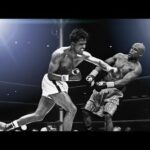How much was Sam Langford worth?
| Net Worth: | $150 Thousand |
|---|---|
| Profession: | Professional Boxer |
| Date of Birth: | March 4, 1886 |
| Country: | Canada |
| Height: | 1.69 m |
About Sam Langford
On March 4, 1883, in Weymouth Fall, Nova Scotia, Canada, Sam Langford was born. He was known as the infamous “Boston Tar Baby,” the “Boston Bonecrusher,” and the “Boston Terror.” He competed against greats from the lightweight category all the way up to the heavyweight division despite being only 5 feet 7 inches tall and 185 pounds. He defeated several champions in the process. He is widely recognized as the best titleless boxer of all time, yet he was never able to win a world title for himself. He was inducted into the International Boxing Hall of Fame in 1990 and the Ring Boxing Hall of Fame in 1955. Nat Fleischer, the creator of Ring magazine, listed Langford as one of the top ten heavyweights of all time.
Langford had a substantial build. His dimensions were 17″ in the neck, 15″ in the biceps, 42 12″ in the chest, and 73″ in the reach. He was noted for his quick hands, crippling left jab, crushing hook, potent right cross, and devastating uppercut. He possessed enormous shoulders and a gigantic back. He primarily competed at middleweight for the majority of his prime, peaking at around 165 pounds. He was a small heavyweight by the time he was 27 and weighed about 180 pounds. He would have competed for titles from welterweight to light-heavyweight if he were fighting now.
When It All Started
Langford fled his violent father and his family at a young age to live as a wanderer. He eventually found work in a modest Boston drug store due to malnutrition and desperation. He was fortunate to have met Joe Woodman, who fed him and gave him a job as a cleaner at the boxing gym at the Lenox Athletic Club. This was the unmarked future of Langford’s first broad stroke. In this place, he lost himself in the research and evaluation of fighting methods, and later he started sparring. At the age of 15, Langford became a professional after winning the Boston amateur featherweight title. As his weight and ability increased, he moved up to the welterweight division at the age of 16.
When Langford faced up against the outstanding Lightweight Champion Joe Gans in 1903, his extraordinary talent was on display. By this point, he had established himself as a legitimate welterweight and had acquired the skills of an experienced champion. He had fought twice in as many days, but in two separate cities. In the opening round, Gans stunned his inexperienced opponent with a fierce start to the fight. Langford answered with cunning and poise, a solid defense, and excellent countering abilities. Gans lost a 15-round decision as the bout went on because Langford’s guile and toughness proved to be too much of a challenge for him. This match is thought to have been Gans’ most resounding defeat in more than a decade.
The “Barbados Demon,” Joe Walcott, the world’s welterweight champion, was Langford’s opponent the next year, in 1904. With the examination of numerous records, it seems evident that Langford was treated unfairly in this, his first and only attempt at the title. When they were forced into a dogfight, Langford showed initiative and proved to be too elusive for his adversary. Although the fight was declared a draw, “there were plenty present who thought Langford won,” according to The National Police Gazette. With his methodical approach, Langford dominated the first seven rounds and remained unbeatable. By the fight’s closing rounds, Walcott’s desperation had shown weaknesses in his roughhouse strategy, which Langford freely exposed. “Langford was entitled to the verdict and should have been awarded the world title,” the New York Illustrated News remarked.
The only significant defeat Langford had was in 1906 to future Heavyweight Champion Jack Johnson. At the time, Langford was merely a light-middleweight going up against the virtually invincible “Galveston Giant.” “Jack handed me the only real beating I ever took,” Langford would later reveal. He was knocked out twice and was defeated in 15 rounds. With time, Langford gained strength, notoriety, and expertise and emerged as a serious challenger to Johnson’s dominance. Realizing this, the wirey maverick decided to repay and give Langford another shot.
It would seem that Langford’s danger wasn’t just felt by Johnson. As the current Middleweight World Champion in his heyday, Stanley Ketchel turned down multiple invitations to go against the “Boston Terror” over the distance. This is amazing since Langford actually terrified Ketchel, who was known for his fearlessness. Eventually, Ketchel reluctantly agreed to the proposal, and in 1910, they met in Boston for a brief six-round affair. They reasoned that Ketchel wouldn’t have much time to be discovered after six rounds. The Philadelphia Bulletin reported that Langford showed to be stronger and smarter despite the time constraint. Although not all accounts indicated this, Langford’s superior jab made the well-liked Ketchel noticeably the more marked man, and the fight was dubiously declared a No Contest.
Sometimes Langford called the round on his rivals. A sports writer named Beany Walker claimed that heavyweight “White Hope” Fireman Jim Flynn would beat British boxer Langford in a rematch in 1910 after Langford, in Walker’s estimation, had previously lost to the American. For financial considerations, Langford did, on occasion, carry opponents to pique interest in a rematch. Sam shouted to Mr. Walker, who was seated in the front row, “Hey, Mr. Walker! ” during the second bout, when Flynn was ready to fight. Here comes your champion,” Langford yelled, launching him straight out of the ring and into Walker’s arms.
In 1911, Langford humiliatingly beat another former world title victor. “Philadelphia” Jack O’Brien, a brilliant dancer, was knocked out in the fifth round and demolished. According to The New York Herald, Langford was gracious to “Philadelphia” by allowing him to stay for as long as he did, even while coasting in third gear. O’Brien was overcome by Langford’s speed and power even in the light-heavyweight division, and the Philadelphian’s cries of anguish were a testament to Langford’s destructive force. The count didn’t have to be completed by the referee.
From 1910 through the early 1900s, practically every top heavyweight of the day was defeated by Langford’s exceptional power. Heavyweights Klondike Haynes, Jeff Clark, Gunboat Smith, Fireman Jim Flynn, Big Bill Tate, Battling Jim Johnson, Kid Norfolk, and John Lester Johnson were all kayoed by Langford during this decade. He frequently squared off against the other black heavyweights of the era who were fiercely shunned. He squared off against Harry Wills 18 times, Sam McVey 13, and Joe Jeanette 13 times. He defeated each opponent via knockout at least once. He has a winning record against both Jeanette and McVey, and these private fights will always rank among his most frequent and memorable clashes. In their series, only Wills prevailed, but their first encounter wasn’t until Langford was 31 years old.
The demanding fighting schedule Langford established for himself wasn’t going to come cheap. Although it is widely acknowledged that he had a detached retina, medical technology in the early 20th century had few options for treating this condition. Langford “Langford has been virtually blind since he fought Fred Fulton in 1917.” according to the Digby Weekly Courier. At this point, the first eye injury happened. According to the 1917 Boston Globe, Langford retired due to injuries and left with one eye tightly closed.
He faced future Middleweight Champion Tiger Flowers in 1922 when he was 39 years old. Langford’s remaining good right eye was damaged in this battle. Despite having a severe disability, Langford managed to box impressively while blind. He waited for Flowers to get close before unleashing a windmill that lucky but bravely floored his opponent. According to The Atlanta Constitution, physicians told Langford that the significant damage to his optic nerve could result in the loss of vision in one eye and a serious impairment in the other. He was informed at this point that continuing in his fighting profession would result in a dim and uncertain future, but Langford was broke and persisted.
Later, Langford reflected on his circumstances in 1922 in The Weymouth Courier in 1935. With my left eye entirely gone and my right eye only seeing shadows, I traveled to Mexico. A cataract caused it. I was paired with Kid Savage to compete for the crown. I could tell that I was bluffing, but I exposed myself. When word spread, they placed extremely large bets on the youngster. I just guessed my way around, and bang, I was home. I was the heavyweight champion of Mexico because he neglected to duck, said Langford. In the final years of his boxing career, Langford was nearly completely blind due to a left eye injury and a cataract in his right eye. Being the final “Fight to the Finish,” Langford not only won the Mexican title but also marked the end of an era in boxing.
At the age of 41, Langford was transported to a French hospital where he underwent surgery to close a muscle fold in the retina of his healthy right eye. Although the procedure was thought to be successful, Langford’s sight continued to deteriorate, and at the age of 43 he retired from boxing. He finally lost all vision. Where the majority of his defeats occurred, he had spent the last few years of his fighting career almost blind, even if he had still impressively won several of the battles by knockout. He finished with a 214-46-44 record. 19 more had 138 KOS and weren’t contests. Langford had more than 300 battles in the other unreported amateur matches.
Langford was left penniless in Harlem despite having a distinguished career. But the future generations’ fascination with his colorful ring life would not fade, and in 1944, Al Laney, a reporter for the New York Herald Tribune, found him and profiled him in a brief series of tales. He was taken care of by a sportswriter’s fund until his passing on January 12, 1956, in Massachusetts at the age of 72 while residing with his daughter’s family.
“This is the man competent critics said was the greatest fighter in ring history,” Laney wrote of Langford. “He is the man the champions feared and would not fight. He is the man who was so good he was never given a chance to show how good he really was.”
According to Mike Silver, the author of the Ring Boxing Almanac, Langford was “likely the greatest fighter to ever live; he mastered every punch.” His right cross, uppercut, and short hook on the inside were especially lethal. One of the best was his devastating jab. He was a cunning tactician with the capacity to leap from an aggressive or defensive position. With trip-hammer blows delivered in four and five punch combos, he could instantaneously stop when fleeing, switch to the offensive, and knock out his opponent in an instant. Every action Langford made exhibited the discipline of a trained master boxer. He was rarely out-fought, out-thought, or out-punched in his heyday.
Langford was a revolutionary and a man ahead of his time, and his skill belied the fact that he was frequently heavier than his opponents by 20 to 50 pounds. He had more knockouts than both Mike Tyson and George Foreman combined. One incident during his career had Langford entering the ring for the eighth round and shaking hands with his adversary. Sam’s perplexed opponent exclaimed, “What’s the matter, Sam, it ain’t the last round!” Langford responded, “Tis for you son,” and then immediately finished out his opponent.
One of the best fighters to ever lace up those boots was Sam Langford.



